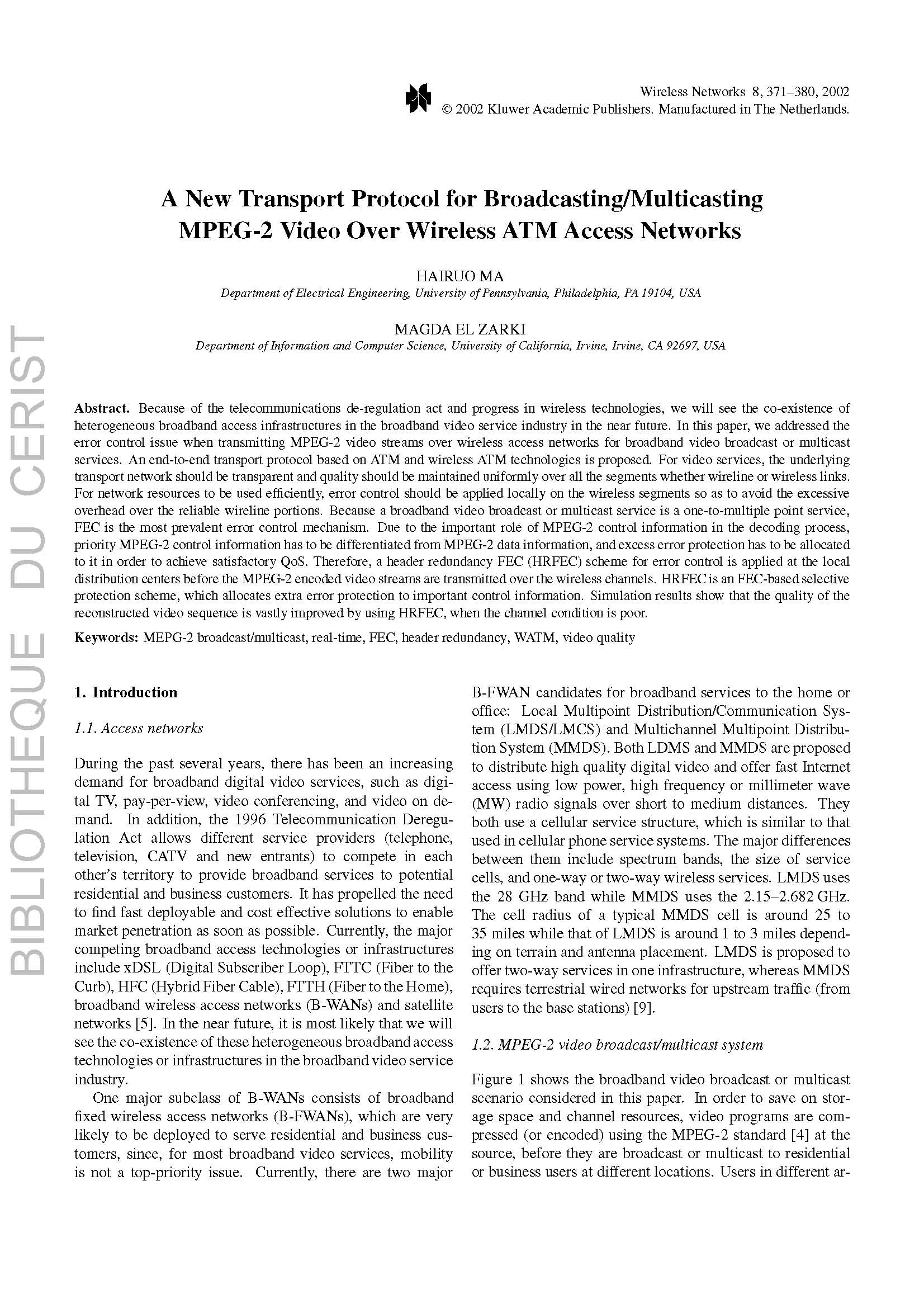A New Transport Protocol for Broadcasting
Article Ecrit par: El Zarki, Magda ; Ma, Hairuo ;
Résumé: Because of the telecommunications de-regulation act and progress in wireless technologies, we will see the co-existence of heterogeneous broadband access infrastructures in the broadband video service industry in the near future. In this paper, we addressed the error control issue when transmitting MPEG-2 video streams over wireless access networks for broadband video broadcast or multicast services. An end-to-end transport protocol based on ATM and wireless ATM technologies is proposed. For video services, the underlying transport network should be transparent and quality should be maintained uniformly over all the segments whether wireline or wireless links. For network resources to be used efficiently, error control should be applied locally on the wireless segments so as to avoid the excessive overhead over the reliable wireline portions. Because a broadband video broadcast or multicast service is a one-to-multiple point service, FEC is the most prevalent error control mechanism. Due to the important role of MPEG-2 control information in the decoding process, priority MPEG-2 control information has to be differentiated from MPEG-2 data information, and excess error protection has to be allocated to it in order to achieve satisfactory QoS. Therefore, a header redundancy FEC (HRFEC) scheme for error control is applied at the local distribution centers before the MPEG-2 encoded video streams are transmitted over the wireless channels. HRFEC is an FEC-based selective protection scheme, which allocates extra error protection to important control information. Simulation results show that the quality of the reconstructed video sequence is vastly improved by using HRFEC, when the channel condition is poor.
Langue:
Anglais
Index décimal
621 .Physique appliquée (électrotechnique, génie civil, génie mécanique, ingénierie appliquée, principes physiques en ingénierie)
Thème
Informatique
Mots clés:
MEPG-2 broadcast/multicast
En temps réel
Redondance d'en-tête
WATM

